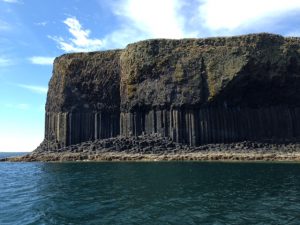
Staffa Island Ahoy!
On a clear calm Wednesday afternoon, I jumped on the boat Staffa Island bound, to pay homage to the cutest little bird imaginable – the puffin.
Puffins are bustling inquisitive little birds, feathered in black and white and finished off with brightly coloured bills. They pop out of their nesting burrows and march about in pairs like immaculately turned out soldiers. Their appearance, along with their size, make this bird an extremely endearing little package, and for as long as I can remember, I have wanted to see a pair or two in the wild.
From early April, large numbers of Atlantic puffins arrive to mate and to nest on the uninhabited island of Staffa about 30 minutes or so away by sea from Iona, and also at the Treshnish Isles further north-west.
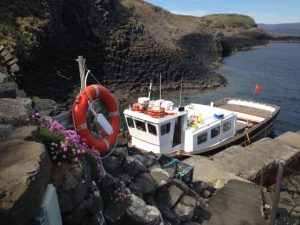
The tiny sheltered landing place on Staffa
When we arrive on Staffa, there are hundreds of puffins floating about, fishing and ferrying herring sized fish to their nests in the rocky crevices above. The bill of a puffin has an unusual hinging mechanism that enables the bill to meet in different places and this enables them to carry crosswise, up to a dozen small fish at one time.
After arriving, we walk to the cliff tops and wait quietly for them to pop out of their nests. We are told that they like humans because our presence wards off their worst enemy – marauding aggressive sea gulls. Before long, they suddenly emerge, firstly standing to attention and then flying off with their short wings rapidly beating, somewhat erratically, down to the bay below.
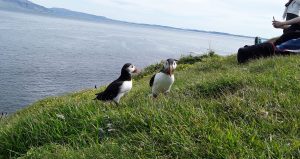
Puffin Perfection!
They are quite simply perfectly gorgeous and I love them all the more for having seen them at such close quarters.
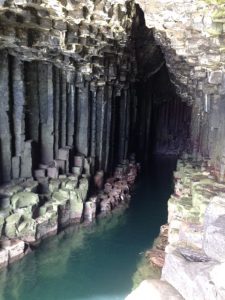
Fingal’s (famous) Cave: Mendelssohn was also very taken with the cave and it’s strange echoing sounds provided him with significant inspiration for The Hebrides overture after his visit in 1829.
Staffa is also home to Fingal’s Cave which is considered to be one of the top ten natural wonders of the British Isles (in company with Durdle’s Door and the Northern Lights).
It is a magnificent sea cave with grand cathedral proportions formed from hexagonally jointed basalt columns, and can be accessed on foot by clambering across the rocks when the conditions are good. The acoustics, and the echoing sounds produced from the ebb and flow of the waves, are legendary.
Sir Joseph Banks was pretty taken with the cavern too, along with a long list of Who’s Whos’ including Wordsworth, Keats, Tennyson and Turner. Even Pink Floyd succumbed to it’s quiet majesty and composed a song in memory of the experience.
On the day I explored the cave, there was not a breath of wind, and with the sea at slack water between tides, all was still and quiet. I was also delighted to find myself completely alone and could not want for a better Fingal experience.
Finally, my favourite Fingal’s fact is that the owner of the island, one Jock Elliott Jnr of New York, gifted the island to the National Trust of Scotland in 1986, to honour his wife Eleanor’s 60th birthday. What a gift – what a man!
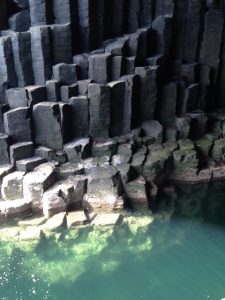
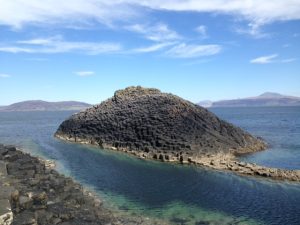
The interesting geometric shaped rocks that were created from a Palaeocene basalt flow, form this little islet just off Staffa

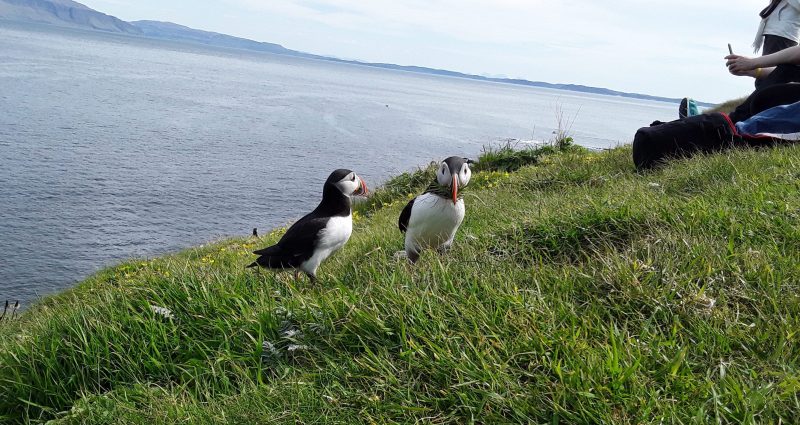

Comments 4
Amazing and I love your way with words, that is the gift!
Author
Thanks Cathy. So glad you enjoyed my Puffin Pilgrimage too! xx
Lovely tale of your puffin adventure and a quiet moment in a typically musical cave. So happy to get to live your adventures vicariously. xx
Author
It’s too good to keep to myself and so much fun to share!